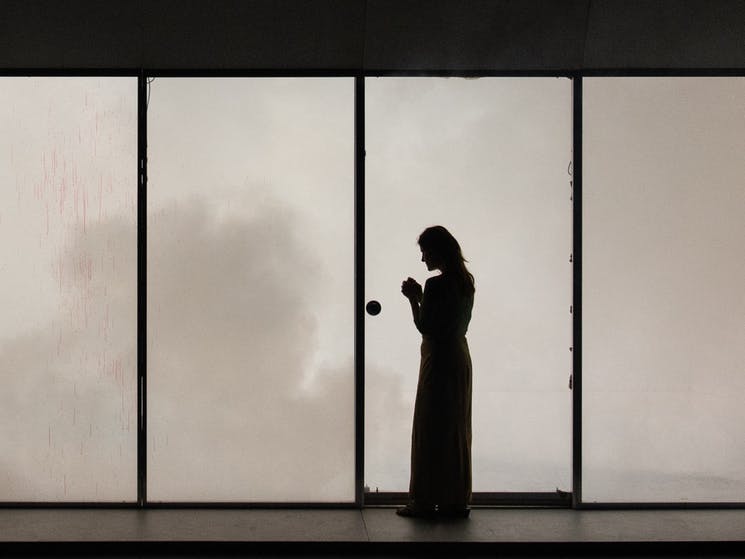
The White Album may have been a seminal record by The Beatles but it’s also a book of essays by Joan Didion. Published in 1979, it is an evocative text where the author made some piercing observations about her world during the late sixties in America. Sydney Festival played host to a clever adaptation of this reflective and relevant text.
In some respects Didion was grappling with a bunch of different ideas and attempting to make sense of them. In one essay, she is hospitalised after experiencing vertigo and nausea. As a result, she receives a multiple sclerosis diagnosis. Didion handles this news by employing her journalism and critical analysis skills to narrate what is happening around her.
This piece has been described as a play within a play. There are two audiences: those seated within the stalls of the Roslyn Packer Theatre and some 20 individuals from the crowd who take part in some sequences on-stage. There is a Q&A session at the end of the show however on Opening Night this turned into an unnecessary divide between the generations present.
We are faced with a large glass box made by P-A-T-T-E-R-N-S Architecture and a rather sparsely-decorated stage. This is supposed to act as the scene of Didion’s L.A. home with her writer husband, John Gregory Dunne. This set-up offers a voyeuristic quality to the events as they unfold. Didion’s life included some famous celebrities paying visits, like Janis Joplin and The Doors recording their third album. It’s interesting stuff and Sharon Udoh offers a gorgeous fragment of “Light My Fire” but that’s not the main event here.
Didion describes things like the Black Panther Trials, the Summer of Love and the Manson Murders. Her text is very vibrant and visceral, even though she does detach herself from the proceedings at times. Didion is not actively protesting with the students but she does describe their world and the counterculture in general. In doing so, she is fashioning a time capsule of sorts.
Lars Jan directs here and his partner, Mia Barron plays Didion in this piece. She narrates almost the entire script. It is impressive that Barron remembers this all and holds our attention for the most part of those 90 minutes. She injects real pathos into the proceedings, projecting subtlety where it’s required and not overplaying it. On-stage the rest of the professional company (Early Morning Opera) take part in the parities, prisons and hospital wards that Didion describes.
The lighting design by Chu-hsuan Chang and Andrew Schneider really sets the tone for the different fragments here. In one chapter the room is a stark white, making it look like a panic room. In another it is bursting with colour and ready for a party. There are students assembled in a classroom but they are interrupted by an overzealous policeman. This culminates in a horrific scene where the latter shoots the student, complete with blood stains dripping down the walls.
There is a lot happening in Didion’s text but at times you can’t help but feel as if some of this was better left on the page. By remaining there it would capture people’s imaginations and the magic of their own individual renderings. In a theatre, at times the story felt a tad forced- there are points where the scenes unfolding lack some of the dynamism of the written prose. On these occasions the reflections are lost to the ether of time, which is a shame because the work and the themes seem as prescient as ever.
The White Album is a sharp piece containing some ambiguity and contradictions. Didion tackles her own world through the prism of the events taking place at the time and her own personal experiences. The result is a lyrical social commentary, insightful in parts, and at its most incendiary when you have the time to savour the words in full.
![]()
![]()
![]()
![]()
![]()
THREE STARS (OUT OF FIVE).
The White Album plays as part of Sydney Festival until January 12. For more information and tickets please head HERE.
